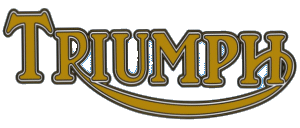



Triumph Ricardo 4-valve engine, 1921

Triumph Ricardo Cylinder Head, 1921

Triumph Ricardo Piston, Valve and Barrel

Triumph Ricardo 1921, rim brakes front and rear

Triumph Ricardo 1921

Triumph Ricardo 1921

Triumph Ricardo 1922, Frank Halford

Triumph Ricardo 1922, Walter Brandish

Triumph Ricardo 1924

Triumph Ricardo 1924
Triumph Ricardo, el primer OHV de la marca (1922-1927)
Haciendo un poco de historia
Desde sus origenes en 1902 hasta comienzos de los años 20, los modelos de Triumph se basaban en los motores de válvulas laterales. Así, el Modelo H fue un gran suceso para Triumph, entregándole al Ejército durante la Primer Guerra Mundial más de 30.000 motos para servicios de mensajería. Triumph ya estaba produciendo su propio motor de 550 cc (4 HP) y sus máquinas tenían también una “dudosa” suspensión delantera propietaria con una horquilla en forma de “D” que pivoteaba en los cojinetes del cristo actuando sobre un resorte colocado delante del manubrio. Esta tosca disposición daba por resultado un considerable cambio en la geometría de la moto (y aún en la distancia entre ejes) cuando la suspensión se movía. En 1920 se presenta el modelo SD que era básicamente un Modelo H con ambas transmisiones a cadena.
Por otra lado, después de la Primera Guerra Mundial, el diseñador de motores y piloto Frank Halford se unia a la “Compañía de Ingeniería de Investigación de Combustión Interna” de Harry Ricardo. Había comenzado a competir con Triumphs de válvulas laterales pero luego diseña una tapa de cilindro de aleación de bronce de 4 válvulas a la cabeza y fabrica un cilindro a partir de una sola pieza de acero maquinada a la que le adaptó un pistón de aluminio. En 1921, luego de instalar su motor de 4 válvulas a la cabeza en el cuadro del nuevo Modelo SD y alimentándolo con alcohol, gana varias carreras confrontando contra motos de mayor cilindrada.
Un buen motor en un cuadro inmanejable.
En 1921 Harry Ricardo, “el mago de la combustión” fue comisionado por Triumph para diseñar un motor deportivo de 500 cc. Con la base del motor de Frank Halford, presenta una tapa de cilindro con cuatro válvulas (paralelas de a pares y a 90°entre las de admisión y las de escape), bujía en ubicación central y un pistón de corona cóncava (soluciones que teóricamente permitían mejor aspiración, mayor compresión y un alto régimen de revoluciones)pero su diseño era bastante conservador puesto que salvo el cilindro y la tapa, el resto del motor y la ciclística eran del Model SD. Al mantener la carrera larga del modelo de válvulas laterales (80,5 x 98 mm) y tener la bujía en el centro de la tapa, las válvulas no eran de gran tamaño. Aún así en el banco dio 20 HP a 4600 rpm y,al comando de una versión racer, Halford rompe los records en Brooklands para la milla lanzada (134 Km/h), 50 millas y el de una hora promediando 123 Km/h.
Sin embargo en el TT de ese año solo una de las tres “Riccy” logra terminar en el puesto 16, fundamentalmente debido a las deficiencias de maniobrabilidad antes mencionadas. En el TT de 1922, ya con horquillas Druids, bomba de lubricación y con modificaciones en el diámetro del cilindro (80.9 x 97 mm), Walter Brandish termina segundo a pesar de correr mas de media carrera sin la segunda marcha. A partir del año siguiente Triumph se presentaría en la Isla de Man con modelos de dos válvulas, dejando al Modelo R como la versión sport en el catálogo de la marca hasta 1927, llamándose Modelo TT a partir de 1926. Se estima que se produjeron unas 6000 o 7000 unidades.
From its origins in 1902 until the early 1920s, Triumph models were based on side-valve engines. The Model H was a boon for Triumph as the military purchased over 30,000 machines for duty during the First World War.
Triumph was already producing 550cc 4 HP engines but performance was hampered by the front suspension - the forks were in the form of a "D" that pivoted from an anchor point at the base of the steering head, the spring extending forwards from the top. This diabolical arrangement resulted in a considerable change in the geometry of the motorcycle as the wheelbase varied when the suspension was active, leading to all sorts of interesting antics should it hit a pothole when pointed anywhere but straight ahead.
In 1920 the SD model arrived, basically a Model H with transmission entirely by chain, and with much improved front suspension.
After WWI Harry Ricardo was joined by rider and aviator Frank Halford who had competed on Ricardo's SV Triumphs. Based on his previous success with their engines, Ricardo was commissioned by Triumph to design a new powerplant, the chosen result being based on the existing Model H, retaining the original bore and stroke (80.9 x 97 mm) but with a much-modified top end. It had a four-valve head and many other features quite advanced for the day. Early versions had the SD frame and forks which were simply not up to the task, particularly given that the new engine delivered as much power as an average car.
The first outing at the TT of 1921 was a dismal affair, with only one of three machines finishing due for the most part to the poor handling. This was addressed by fitting the engine to the new SD model chassis with Druid forks which, running on alcohol, proceeded to do very well in competition even against machines of considerably larger capacity. At the 1922 TT Walter Brandish came in second, and the new machine racked up a number of continental trophies, a gold at the ISDT, and a string of notable runs at Brooklands with Halford at the helm.
The racing versions reverted to 2-valve designs for 1923, but the 4-valve machines were available in the catalogue as the Model R, the model designation being changed to TT for 1926 and 1927, its final year of production. It is estimated that some six to seven thousand machines were built.
Sources: Spanish text and most images courtesy Sergio Scalerandi
July 2016
Peter Swords of NSW writes:
... another dry build pic of a work in progress. It's a circa 1923 TT model Ricardo, one of only about four still in existence from a batch of about twenty.
These bikes were commissioned by Triumph with the sole purpose of winning at the TT. Most writers make no distinction between the TT model and the road version, the main difference being a different crankcase and cylinder head which has splayed exhaust ports. Major Frank Halford's motor is still in existence in the UK, fitted into a Triumph frame and built to look like a works racer. After a lack of real success at the IoM, some bikes made their way to the Antipodes. One was in the possession of the late Eric Langton in Perth WA, unfortunately now a rusty wreck with a blown up engine.
As for my own machine, when purchased was missing the cylinder head but sixteen years later the very head from this bike surfaced and I was able to purchase it, so now bike and head are re-united. the rebuild is progressing slowly due to too many projects in the shed. Hope these few notes help.